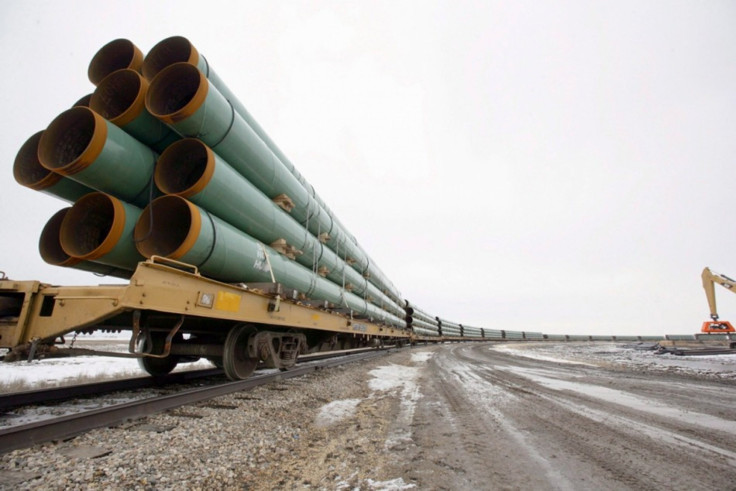Keystone XL Pipeline: Former Navy SEAL Chief Outlines Potential Terrorist Threats In New Report

A single bomb attack along the Keystone XL pipeline could result in a 1.2 million-gallon deluge of tar sands crude across Nebraska farms and critical water supplies. And a coordinated attack at multiple locations could spill more than 7 million gallons of oil -- seven times the crude carnage of the Kalamazoo River oil spill in 2010, the largest inland oil spill in U.S. history.
That’s the finding of a new report by retired Navy SEAL chief David Cooper, who studied how vulnerable the proposed Canada-to-Texas pipeline might be to deliberate sabotage.
Tom Steyer, a prominent opponent of the 1,700-mile Keystone XL project and a hedge fund billionaire, hired Cooper to conduct the assessment, reported the Huffington Post. The 14-page report was released on Wednesday, albeit in a redacted form “to keep it from being a playbook for aspiring terrorists,” Bloomberg Businessweek noted.
Cooper is a decorated, 25-year veteran of the special forces and now works as a consultant. He formed his conclusions by combing emergency shutdown response times and pipeline flow forecasts from the government and TransCanada, the project’s builder. He also visited a critical valve station along the existing Keystone I pipeline and waited around long enough to have conceivably planted explosives and safely escaped, Bloomberg reported.
"The very nature of Keystone XL's newsworthiness, should it ever be built, increases its attractiveness as a target to terrorists," Cooper wrote in the report. "That simple fact ... should clue in pipeline owners and government officials to the very real possibility of intentional attack. They should plan, prepare and regulate accordingly."
Critics of the Keystone XL have raised concerns about its exposure to terrorist threats for as long as the pipeline's backers have jostled to get President Barack Obama to approve the project. But most of the safety issues surrounding the tar sands pipeline have to do with structural security -- not outside attacks from terrorists.
In May, federal pipeline safety regulators placed two extra conditions on the construction of the Keystone XL after learning of potentially dangerous construction defects on the project’s southern leg, which went online in December 2013. That section, a 485-mile stretch from Cushing, Oklahoma, to the Gulf Coast of Texas, had to have nearly three-fourths of its welds repaired over the course of just one week last year.
A shutdown on the pipeline this week for planned maintenance work raised suspicions of ongoing problems among the pipeline’s observers on Tuesday. “They may have planned it but something is wrong,” an industry insider told DeSmogBlog. “A two day shutdown on a new line raises suspicions.”
© Copyright IBTimes 2024. All rights reserved.





















